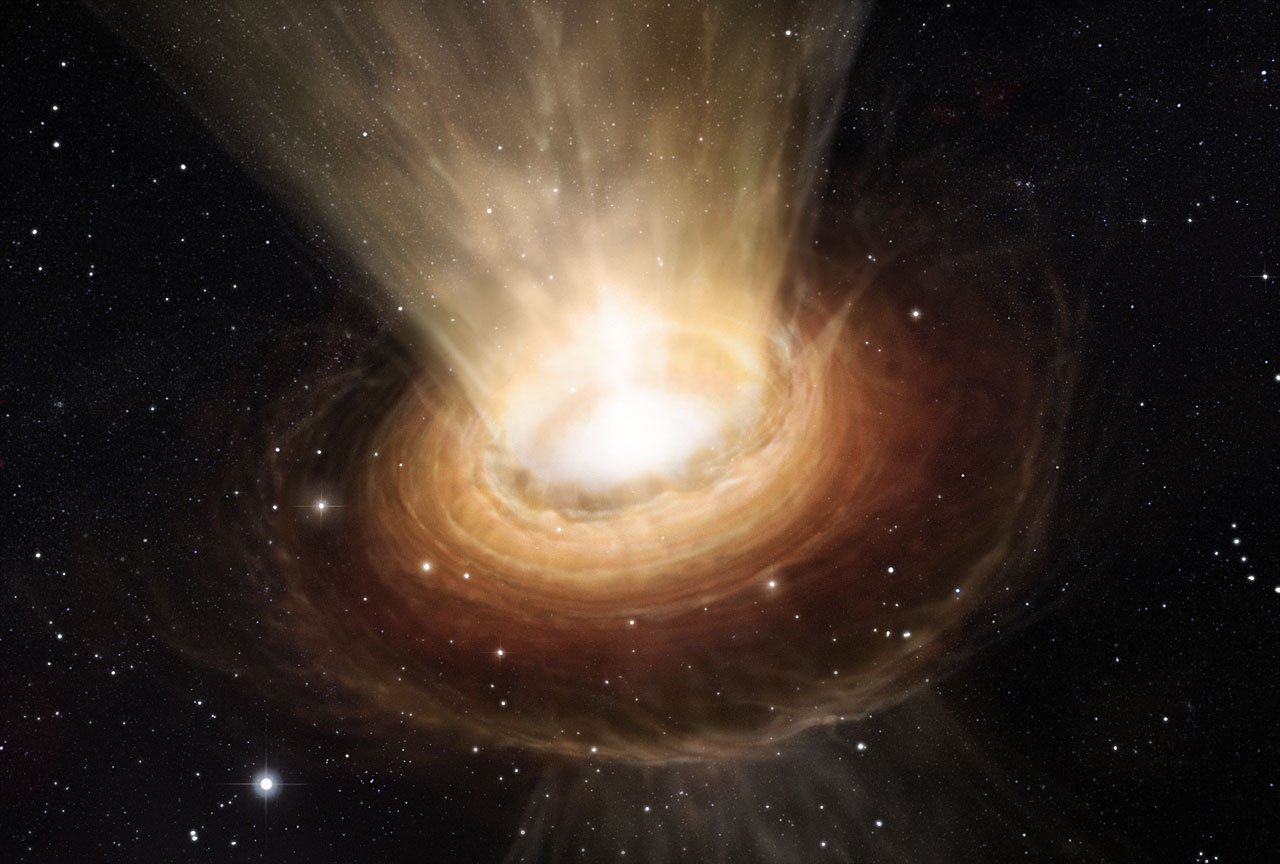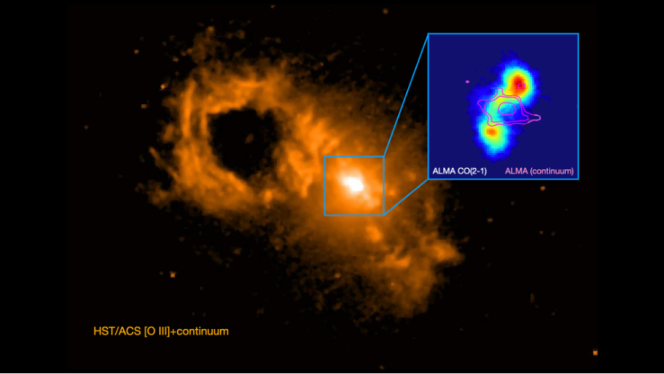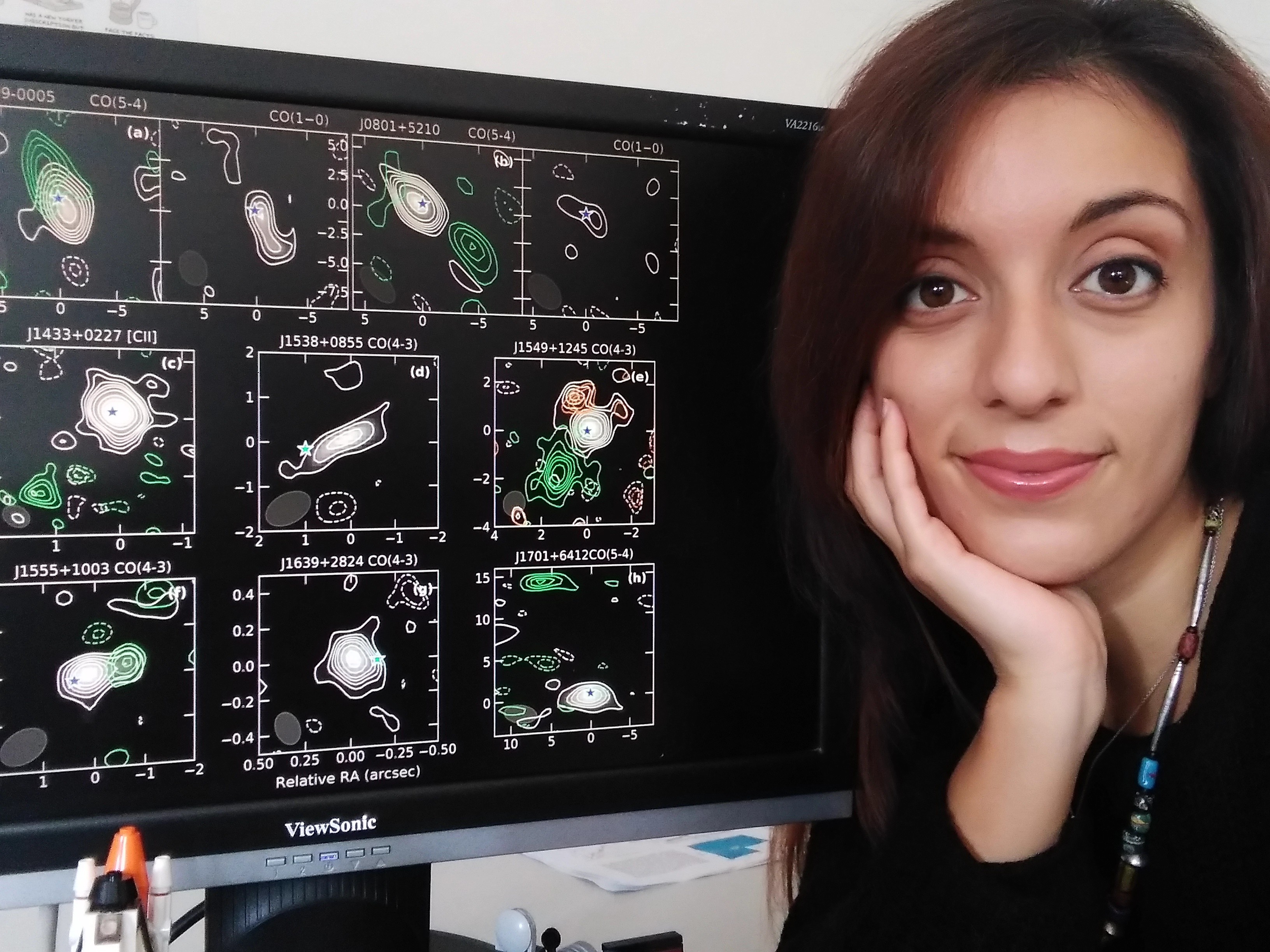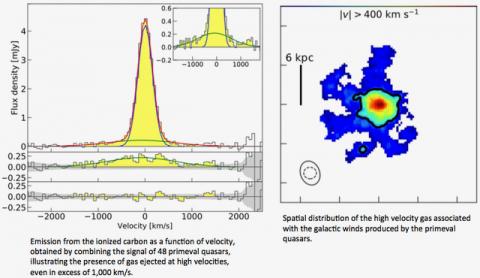How to black-holes and their host-galaxies grow in the distant Universe? Do supermassive black-hole winds affect the galaxy? What is the cycle of baryons in and out of galaxies?
Trieste University and INAF Astronomical Observatory
Rome University Tor Vergata
Kavli Institute for Cosmology Cambridge
Rome University La Sapienza
Course for master degree students at Trieste University.

Uno studio pubblicato sulla rivista Nature e guidato da tre ricercatrici dell’INAF, in collaborazione con la Normale di Pisa e numerosi istituti di ricerca internazionali, ha misurato per la prima volta la frazione di venti generati dai buchi neri supermassicci al centro delle galassie nell’universo primordiale, svelando che all’epoca questi venti erano molto più frequenti e potenti rispetto a quelli osservati nelle galassie a noi vicine.
Read more
Based on observations made with the ESO’s XSHOOTER instrument at the Very Large Telescope in Chile’s Atacama Desert, an Italian-led team of international astronomers suggest that feedback from the black holes’ formation process slowed down their growth, leading to the balance of matter that we know today. The results of the study were published today in Nature. These winds were so powerful — with velocities about a sixth of the speed of light — that they cleared the gasses from the regions surrounding these black holes, stopping them from growing further.
Read more
A surprise discovery in the early universe has major consequences for the evolution of black holes and galaxies. Scientists led by Manuela Bischetti, a postdoctoral researcher for Italy’s National Institute for Astrophysics at the Astronomical Observatory of Trieste, have made the unexpected discovery that extremely strong winds from early supermassive black holes likely slowed their growth. Bischetti and her colleagues observed 30 quasars, extremely luminous objects often found in the center of ancient galaxies, and identified these winds as an initial stage of “black hole feedback,” a process that is central to the development of modern galaxies, including our own Milky Way, according to a study published in Nature .
Read more
Come si muovono i venti di gas freddo emessi dai quasar? Principalmente sul piano del disco galattico, e pur espandendosi lentamente – con velocità massime di 200-350 km/s – finiscono per sopprimere la nascita di nuove stelle. È quanto emerge da uno studio, guidato da Cristina Ramos Almeida dell’Instituto de Astrofísica de Canarias e da Manuela Bischetti dell’Inaf di Trieste, condotto su campione di quasar luminosi osservato con Alma.
Read more
«Abbiamo scoperto che i quasar iperluminosi – quelli con luminosità pari a un milione di miliardi di volte quella del Sole – vivono in galassie in rapida trasformazione e interagiscono gravitazionalmente con numerose galassie vicine», spiega Bischetti, prima autrice dell’articolo e ricercatrice all’Inaf di Trieste. «Galassie che abbiamo localizzato a solamente 10 o 20 mila anni luce dal quasar: una distanza piccolissima in termini astrofisici, e che fa sì che il vicinato di questi quasar sia molto “affollato”. Con tutta probabilità, il quasar e le galassie del vicinato si fonderanno dando origine a una galassia gigante, come quelle che vediamo, già evolute, nell’universo vicino. Nel nostro studio abbiamo catturato la fase di pre-assemblaggio delle galassie giganti e abbiamo visto che i quasar sono protagonisti essenziali di questo processo».
Read more
Scientists at the Kavli Institute, in collaboration with researchers at various institutes in Italy, have discovered that in the early Universe, at the time when the first stars and first galaxies formed, the first massive black holes became extremely greedy, by gobbling enormous amount of matter, and generated extremely powerful winds. These winds reached velocities in excess of 1,000 kilometres per second, and certainly affected the galaxies in which the black holes were hosted. The data was collected by the Atacama Large Millimetre Array (ALMA) in Chile. The project was led by Manuela Bischetti, former student at the Kavli Institute.
Read more